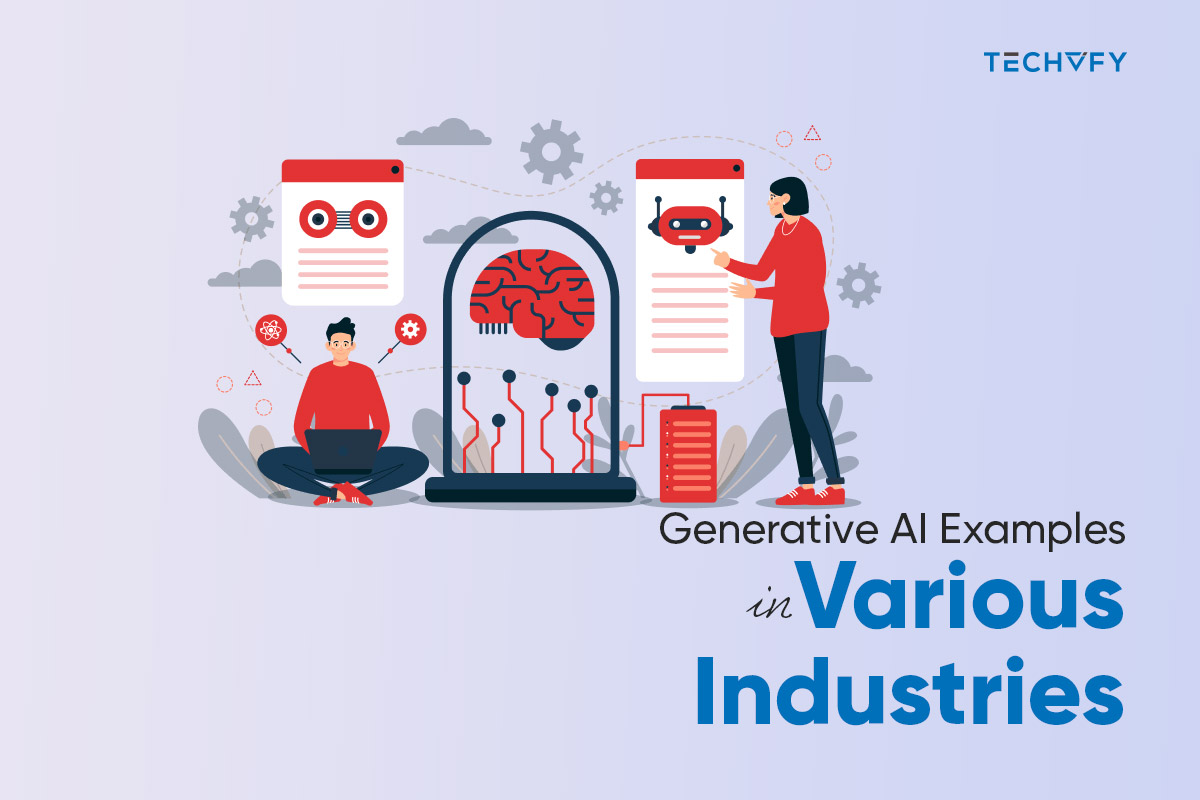The Importance of Generative AI in Banking Industry
For over a decade, generative AI in banking sector has fueled the financial services industry, enabling incredible breakthroughs like better underwriting and improved fraud scores. The financial industry has embraced and widely used the power of general AI as an invaluable tool for its operations.
While AI has proven advantageous in various ways for financing organizations, the financial industry has accepted generalized AI. It is widely utilizing its power as an invaluable tool for its activities. This adaptable technology can generate material in various formats, including text, graphics, code, and music, making it suitable for multiple applications. Its ability to improve accuracy and efficiency has increased its popularity in the banking and financial industries.
Generative AI in banking
I. How is Generative AI Used in Banking?
1. Detection of Fraud and Risk Assessment
Fraudulent activity is a severe threat to the financial industry. Generative AI in Banking analyzes large volumes of financial data to find trends and abnormalities connected with fraudulent transactions. By learning from previous fraud cases, these algorithms can detect suspicious activities and send alerts for further inquiry. This cutting-edge technology keeps banks one step ahead of scammers and improves risk assessment.
2. Unique Customer Experience
Building great client relationships requires banks to provide a tailored experience. AI drives virtual assistants and chatbots, which deliver tailored client care. These AI-powered assistants can manage consumer inquiries, account information, transaction assistance, and personalized financial advice. Generative AI use cases in banking provide excellent customer service and engagement by replicating genuine conversations and understanding client intent.
3. Data-Driven Financial Recommendations
Generative AI in Banking evaluates massive volumes of client data, such as transaction history, spending trends, and investment preferences, to develop tailored financial advice. These suggestions may include customized investment strategies, debt management plans, and savings and budgeting advice. Banks may use AI to provide their consumers with more relevant and valuable financial advice, allowing them to make more informed financial decisions.
4. Consolidate Risk Management
The stability and expansion of banks depend on effective risk management. By evaluating large data sets and identifying potential dangers, cutting-edge AI helps with risk assessment. Generalized AI algorithms give banks a deeper understanding of risk profiles by considering various variables, such as market developments, consumer behavior, and economic data. Generative AI fintech can use this information to make well-informed decisions, improve risk management techniques, and guarantee financial stability.
5. Investing Reasonable Analysis
To offer insights and forecasts, aggregate AI algorithms examine market movements, historical data, and financial news. Based on risk and return characteristics, these algorithms can develop investment strategies, optimize portfolios, and locate possible investment opportunities. Generative AI in financial services may maximize investment outcomes and improve client guidance by utilizing AI to enhance investment analyses.
6. Regulatory Support and Compliance
For banks, following regulations is of utmost importance. By analyzing vast amounts of transaction data and spotting potential money laundering activity, cutting-edge AI plays a crucial part in anti-money laundering (AML) compliance. Generative AI financial services can assist banks in meeting regulatory requirements and preventing financial crime by identifying suspicious patterns and relationships that may point to illicit transactions.
Learn more about Generative AI with TECHVIFY:
II. Generative AI Models Application in The Finance Industry
| Fraud Detection | Generative artificial intelligence (AI), specifically Generative Adversarial Networks (GANs), can be used to detect and identify fraudulent transactions and teach systems to spot underrepresented activity. |
| Document Analysis | Financial institutions can use generative AI to process vast volumes of documents, extract meaningful information, and assist in making decisions based on reliable data. |
| Real-Time Monitoring of Transactions | AI methods like generative AI allow real-time transaction monitoring by examining transaction details such as location, frequency, and timing to detect suspicious activity. |
| Data Privacy Maintenance | Banks can determine loan eligibility without jeopardizing consumer privacy by using generative AI to construct data privacy models that secure client information. |
| Paraphrasing | In addition to helping with content creation and translation chores, generative AI models can be utilized for paraphrasing jobs, producing alternate text versions while maintaining the meaning. |
III. Importance of Generative AI for Banking
By utilizing artificial intelligence to produce fresh data and content, generative AI in banking is transforming the financial sector. Starting with its capacity to improve fraud detection and prevention through the creation of synthetic data that mimics actual transaction patterns, it is crucial to banking in many ways. As it enables chatbots and virtual assistants to provide contextually relevant responses, this technology also results in more individualized consumer experiences, deepening engagement and boosting loyalty.
Additionally, by modeling numerous market scenarios, generative AI in banking enhances risk management and enables banks to make wise decisions and safeguard their portfolios. Additionally, it is essential to algorithmic trading and investment techniques because it helps to improve algorithms and make better investment choices.
Moreover, generative AI helps credit risk assessment since it generates artificial data for more accurate and data-driven credit decisions. Generative AI in banking provides synthetic data for training, assuring regulatory compliance without compromising customer privacy, and anticipating potential cyber risks. This addresses compliance and security. Technology facilitates innovation by generating fresh thoughts and opportunities, automating financial reporting, and improving customer analytics. By increasing operations, customer experiences, and decision-making procedures, generative AI is transforming the banking industry.
Conclusion
Generative AI models have opened new horizons in the finance industry, enabling financial institutions to make data-driven decisions, enhance customer experiences, and drive innovation. From portfolio optimization and fraud detection to credit underwriting and customer relationship management, the applications of generative AI models are vast and impactful. As these models evolve, we can anticipate even more transformative changes in how financial institutions leverage AI to unlock insights, improve operational efficiency, and deliver personalized financial services. Embracing generative AI models is critical for financial institutions to stay competitive, provide exceptional customer experiences, and navigate the complexities of the evolving economic landscape.
TECHVIFY – Global AI & Software Solution Company
From Startups to Industry Leaders: TECHVIFY prioritizes results, not just deliverables. Accelerate your time to market and see ROI early with high-performing teams, AI (including GenAI) Software Solutions, and ODC (Offshore Development Center) services.
- Email: contact@techvify.com.vn
- Phone: (+84)24.77762.666







